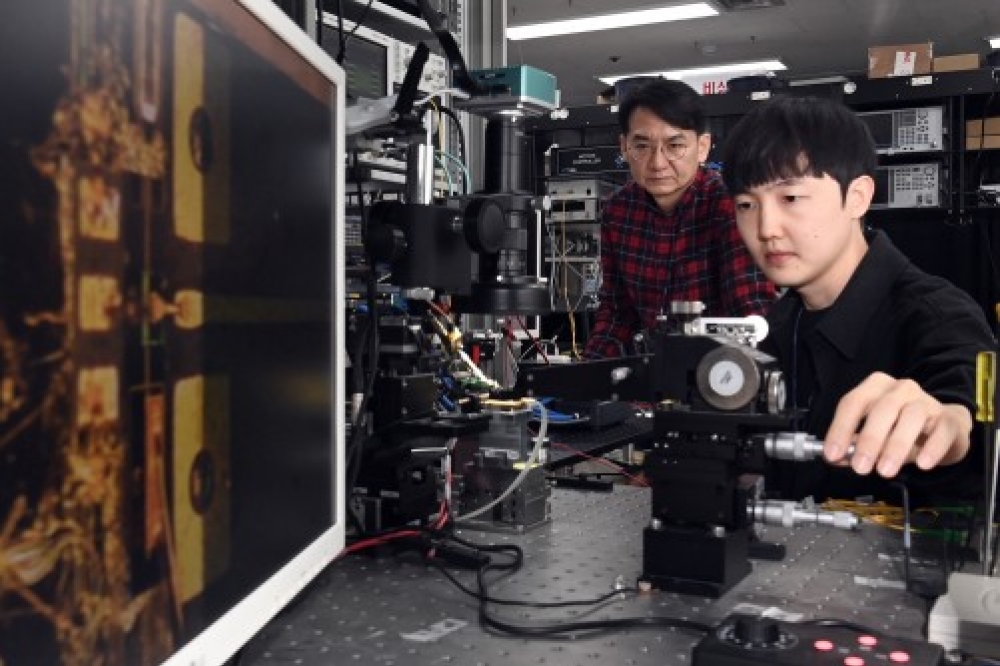New compact light source achieves 224G per channel

ETRI researchers say their device uniquely integrates a photonic mode converter and photodetector with a 224G EML, and can offer double the modulation bandwidth and data processing capacity of traditional intradatacentre transceivers
Researchers at the Electronics and Telecommunications Research Institute (ETRI), a Korean government-funded organisation, have created a light source device that they say can be used in megascale and hyperscale datacentres and 5G/6G mobile communication base stations. The team say their technology can transmit full HD movies of 5 GB size at a rate of 5.6 frames per second.
According to ETRI, the scientists independently developed electro-absorption modulated laser (EML) light source technology capable of transmitting optical signals at 224G per channel in datacentres’ internal networks. Additionally, the device is compact, measuring just 0.2 mm x 0.85 mm in size. It is integrated with a photonic mode converter and a monitoring photodetector, and the researchers say it uses indigenous technology from the design to the manufacturing stages.
The team’s vision is for this light source to be commercialised and embedded in the tower racks inside large datacentres and applied to the transmission part of optical transceiver modules, essentially being inserted into the line cards within the tower racks. Typically, 32 optical transceivers, each with 8 channels at 224G, would constitute a single line card, with multiple line cards being mounted on the tower racks.
The researchers emphasised the significance of moving beyond module development to chip-level development, which is a core foundational technology. By developing key technologies for the light source chip, the team say they expect to lead the global market for optical communications. This technology would enable larger modulation bandwidths and data processing capacities, leading to more substantial and cost-effective optical modules, to address increasing data usage in artificial intelligence, as well as virtual and augmented reality.
Compared with traditional intradatacentre optical transceivers, which can transmit optical signals up to 100G per channel with EML light source devices, the researchers say their device doubles the modulation bandwidth and data processing capacity. Moreover, the team says that their work represents the first time a photonic mode converter and a photodetector have been uniquely integrated into the 224G EML light source.
The researchers say that the integration of a mode converter has significantly increased the coupling efficiency with optical waveguides from 50 percent to 85 percent, an advancement which also reduces the energy consumption of optical transceivers. Additionally, according to the scientists, the integrated photodetector for monitoring optical output intensity has enabled significant cost savings in packaging for the fabrication of single-channel optical modules, as well as 800G/1.6T class optical modules, compared to the conventional structure utilising separate photodetectors.
The EML device, which the team say has demonstrated 224G transmission of optical signals over 2 km even at 70 degrees Celsius, is currently being developed by only a few companies worldwide. They hope that this technology will reduce reliance on imports in future.
Yong-soon Baek, senior vice president of Terrestrial & Non-Terrestrial Integrated Telecommunications Research Laboratory at ETRI, commented: “We have contributed to securing the competitiveness of the domestic optical device and component industry by becoming the first global pioneer to develop key technologies applicable to the rapidly evolving datacentre and 5G/6G markets.”
Young-Tak Han, the principal researcher and project leader at ETRI’s Optical Communication Components Research Section, added: “For compound semiconductor optical devices, which are highly sensitive to processing variables, the most critical factors are securing core technologies and ensuring stable foundry operations. We have managed to address these issues by developing key technologies.”
Image credit: Electronics and Telecommunications Research Institute (ETRI)



































